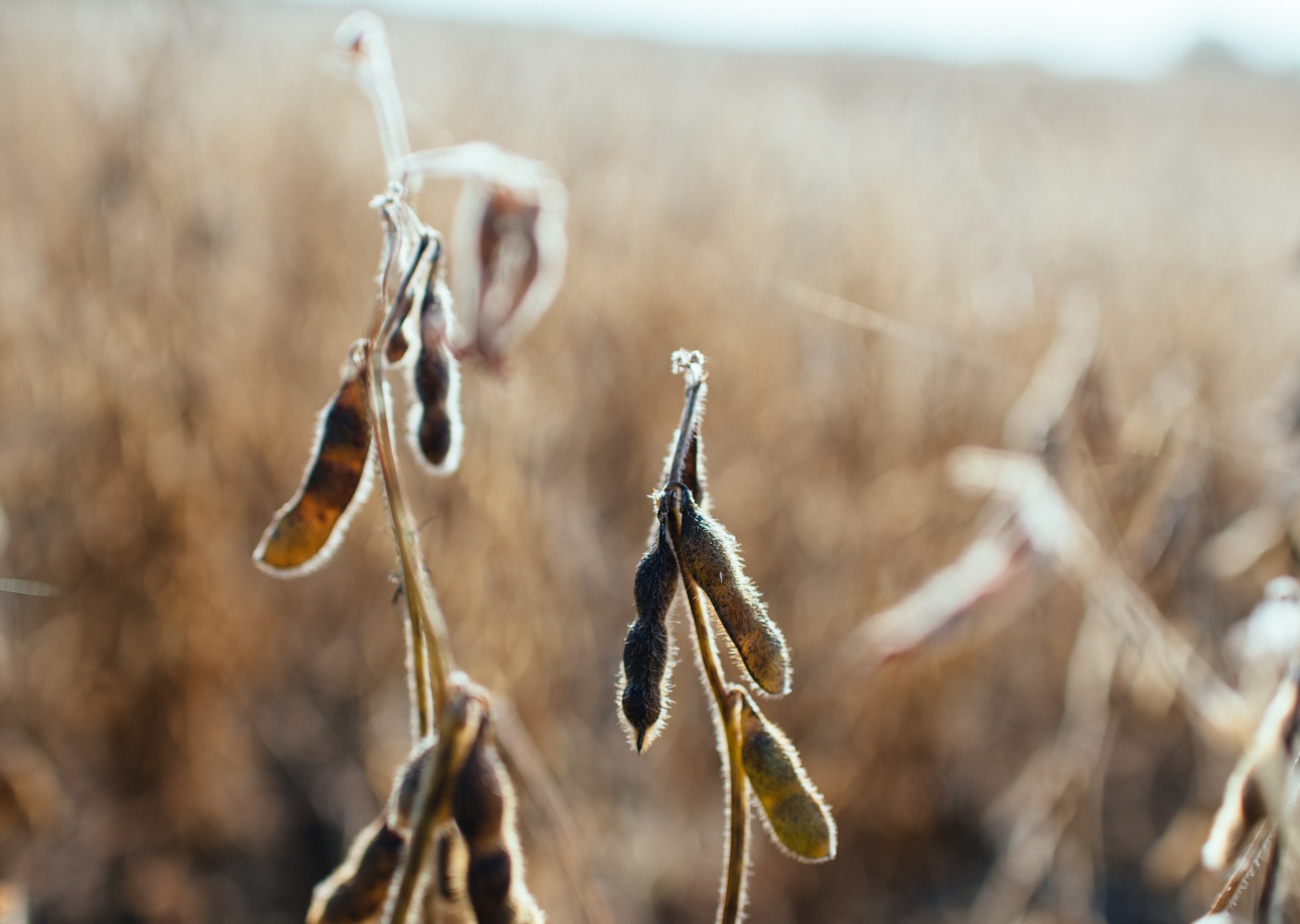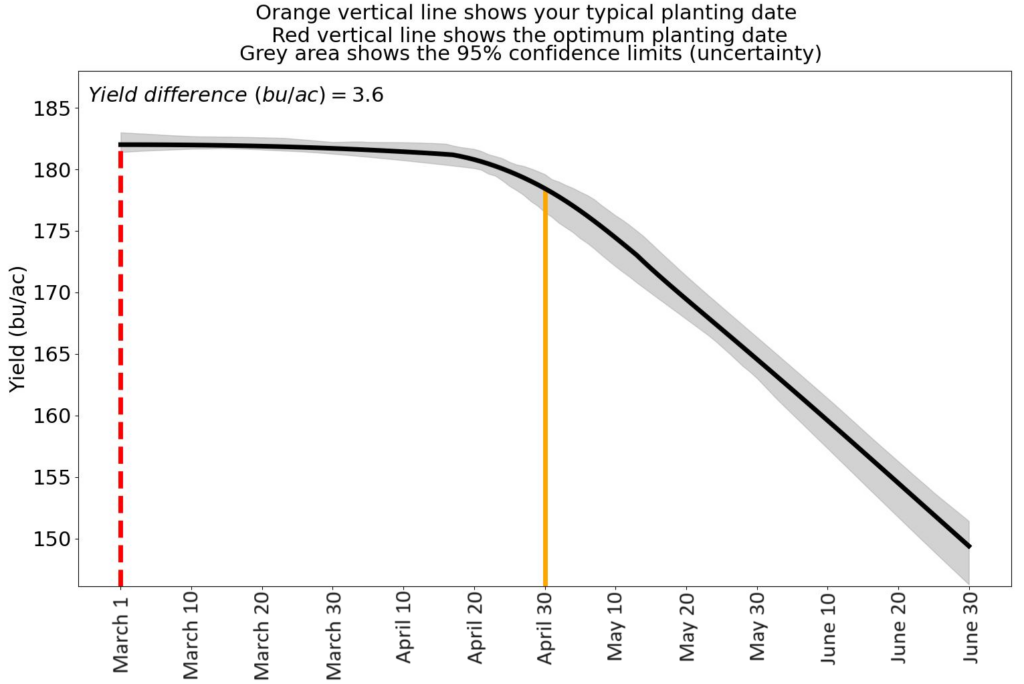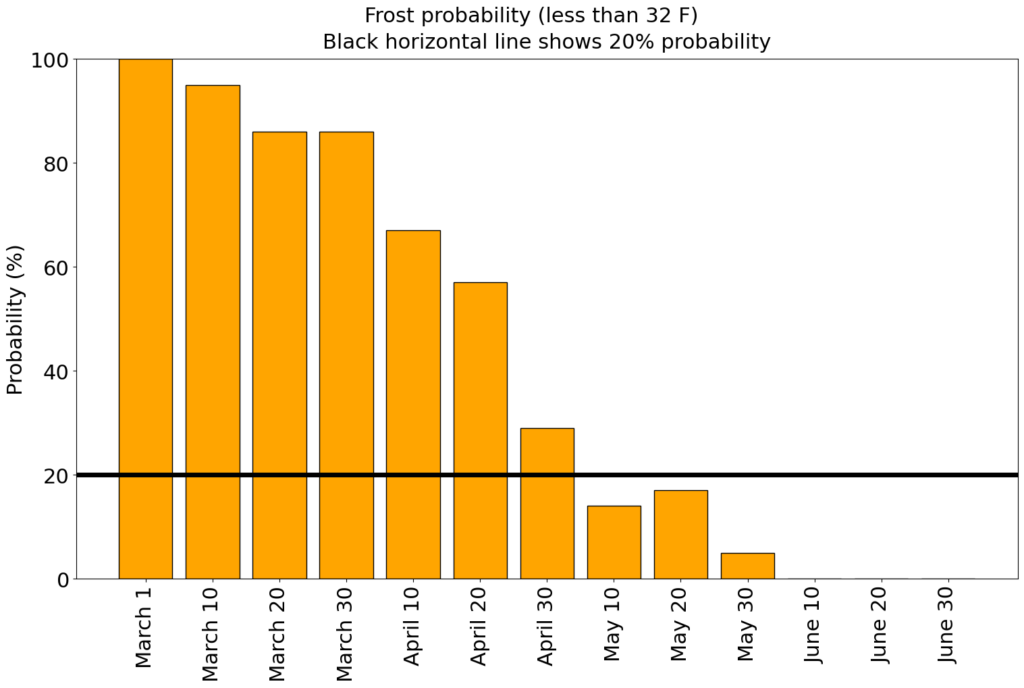

Examples
How to interpret the results
Agroptimizer provides recommendations for the best planting dates, seeding and fertilizer rates for corn and soybean. See some examples below to help you understand and interpret the graphs and results.
Example 1
The graph below shows how planting date affects corn yield. Agroptimizer identified March 1st as the best date to plant for maximum yield resulting in 3.6 bu/ac greater yield than planting around April 30th. The graphs shows that planting as early as possible would result in maximum yield. But the yield trend is flat between March 1st to April 20th. This suggests that planting in early March would result in similar yield to planting in late April.
What about frost?
Agroptimizer makes all calculations assuming there was no frost damage. But if your field is in the north, March planting date might not be realistic. To help you choose the most appropriate planting date for that field we provide frost probabilities. As you see in the graph below, planting before April 20th would be risky due to the high frost probability in that field.
Example 2 – Optimum corn N rate
In the graph below you see the optimum nitrogen rate for maximum yield (left graph) and maximum profit (right graph). Although Agroptimizer recommends 300 lb/ac for maximum yield (left graph), it is obvious that reducing nitrogen rate to approximately 150 lb/ac would result in similar yield.
We know that the optimum fertilizer rate for maximum profit is usually lower than the rate for maximum yield. In the right graph above you see the optimum nitrogen rate for maximum profit. The optimum nitrogen rate was 178 lb/ac but it is obvious that rates between 140 to 210 lb/ac would result in similar profit. Sometimes, different points on the curve are associated with very similar yield/profit. Agroptimizer will recommend the “best” rate which may result in minimal yield/profit difference compared to other rates.
Recommendations for profit
Occasionally, Agroptimizer may recommend to reduce nitrogen or seeding rate very “aggressively” for maximum profit (e.g., use 90,000 seeds/ac for soybean or 110 lb/ac of corn N rate). You know your field better than anyone (e.g., soil variability, low productivity areas etc.) so adjust the recommendation accordingly.
Take home message
Use your best judgment and do not overinterpret the results. No one knows your field better than you!
Sign up for our newsletter
Stay up to date with the roadmap progress, announcements and exclusive discounts feel free to sign up with your email.


